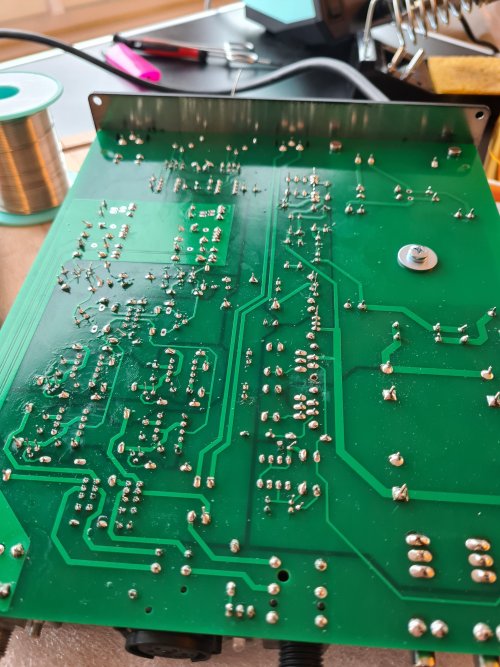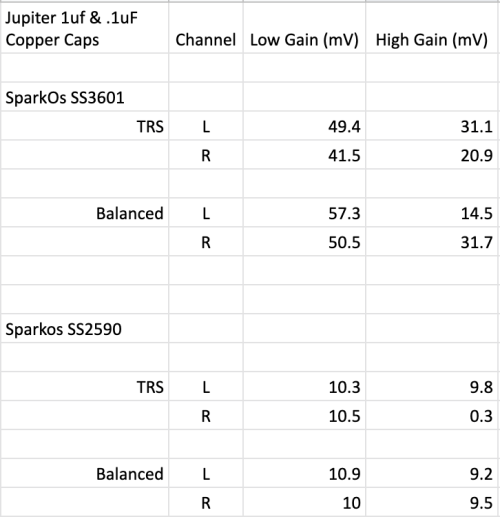Here's my take on the DIY Sangaku - the SonnyGaku. Re-designed 6-layer PCB that makes a bunch of changes:
- Removes all of the PSU stuff other than the filter caps
- A lot of SMD components to save space in some places - Sumusu resistors throughout except for the 1 ohm output resistors
- Replaced the DN2535N3 with CPC3703CT
- Vishay z-foil trimpots
- Nutubes are mounted on daughter boards with rubber standoffs, connected to main board with soft wire
- All PCBs in the amp chassis are mounted with rubber standoffs
- All jacks, switches, etc., use 2.54mm spacing connectors so anything can be used.
- Film cathode caps and filament caps - no ceramic at all (other than for the relays)
- Extra space for coupling caps - have tried Miflex and Mundorf so far.
- JFET buffers before and after the Nutubes for better compatibility with volume control methods
- XLR pre out with toggle on/off
- Remote control 256-step ladder attenuator
- PSU section has separate supplies for: +/-18V (AMB Sigma 22), 70V (B+ from Neurochrome Maida), 12V (relays, etc), 5V (digital stuff), and 0.7V (using an LT3045)
- Custom PSU interface board with relay trigger and the rectifier/cap combo for the Maida.
The SonnyGaku provides a
significant noise floor reduction. The normal DIY version and even the retail version have Nutube hiss with more sensitive headphones, like my Borealis. SonnyGaku is nearly silent. With Sennheiser 6x0s, it is silent. The noise from the pre-out is all but eliminated as well. Also compared to the normal DIY version, much tighter bass (though I achieved better bass just with upgraded coupling caps in a DIY version). The Sparkos opamps are a nice improvement over the OPA551. I had considered the larger Sparkos, but don't really need the extra power.


























